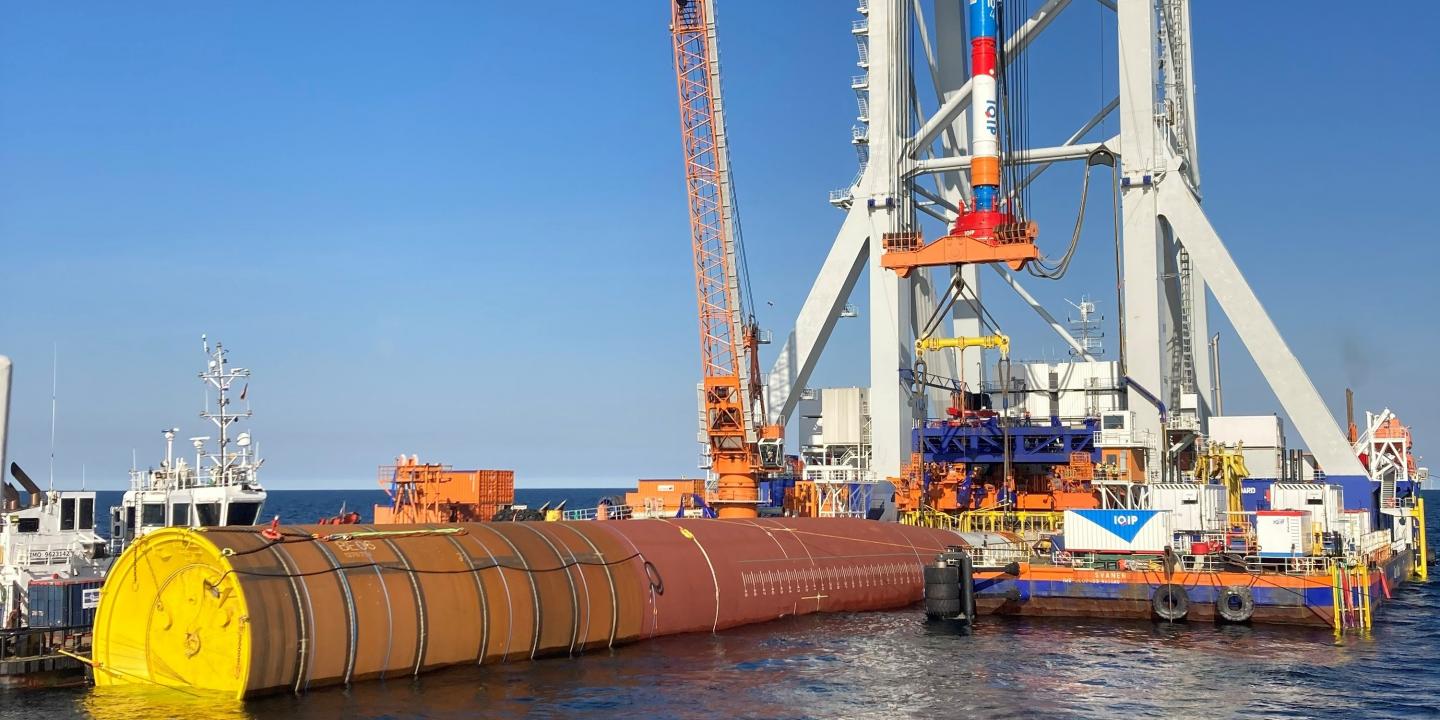Van Oord’s heavy-lift installation vessel Svanen has installed the first of 50 monopiles for the Baltic Eagle offshore wind farm. In addition to the transport and installation of the wind turbine foundations, Van Oord is responsible for the supply, transport and installation of approximately 70 kilometres of inter-array cables.

The Baltic Eagle offshore wind farm is located 30 kilometres northeast of the German island of Rügen and covers a 40 square kilometre area. With a production capacity of 476 MW, Iberdrola’s Baltic Eagle offshore wind farm will deliver renewable energy to 475,000 households while reducing carbon dioxide emissions by nearly 1 million tonnes annually. It is scheduled to be fully operational by the end of 2024.
Installation method
The installation strategy for the foundations is based on the feeder concept, which involves floating the foundations to the Svanen at the offshore installation site. The monopiles are being transported to the site from EEW in Rostock, Germany. Once they have arrived, the Svanen lifts them upright. After precise positioning by the gripper, pile-driving begins. Van Oord already started transportation of the transition pieces from the port of Aviles in Spain to the Van Oord site at the port of Mukran in German beginning of March. The transition pieces are scheduled to be installed in the second quarter. Later this year, Van Oord’s cable-laying vessel Nexus and trencher Dig-It will be deployed to install and bury the inter-array cables.

Back in the Baltic
The Baltic holds incredible potential for offshore wind in Europe. Germany and several other countries, including Poland, Sweden, Finland and Estonia, are exploring new opportunities for offshore wind. The Baltic seabed consists of many different soil types, making conditions challenging. The Svanen is familiar with these conditions because it has played already a leading role in several other Baltic projects. The vessel has installed more than 700 foundations throughout Europe and the vast majority of monopiles in the Baltic Sea.